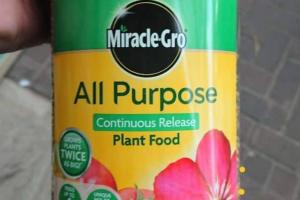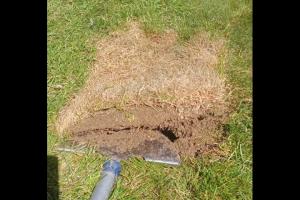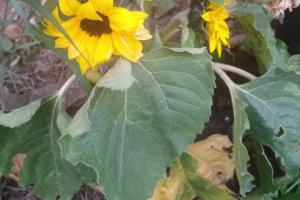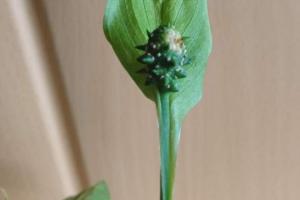6 Clear Signals Your Butternut Squash Is Ready to Be Harvested (Plus Tips on Storing Them)
Welcome to the world ofbutternut squash, where golden treasures await in your garden! If you’ve been patiently tending to your squash plants and can’t wait to savor the sweet, nutty flavor of this fall favorite, you’re in the right place. In this article, we’ll explore the telltale signs that your butternut squash is ready to be plucked from the vine, and we’ll arm you with tips on how to store these beauties for months of culinary delight.
Signs Your Butternut Squash Harvest is Ready for Picking
1. Mature Color
When determining the optimal time to harvest butternutsquash, one key indicator to consider is its mature color. Butternut squash, like many fruits andvegetables, undergoes a color transformation as it ripens and matures on the vine. When it’s ready for harvest, the squash should display a deep, rich, and uniform tan or beige color. This color should be consistent across the entire surface of the squash, with no green or yellowish patches remaining.
Inspect the butternut squash carefully, paying close attention to its skin. A mature butternut squash will have a dull, matte look, rather than a bright or glossy one. Just as well, the squash’s skin should be firm and hard to the touch, indicating that the squash has developed a thicker rind, which is a sign of maturity.
Avoid harvesting butternut squash that still has green or light-colored spots, as these are indicators that it is not yet fully mature and may not have reached its peak flavor and sweetness. Overly mature butternut squash can have tough, fibrous flesh, so it’s essential to strike the right balance by harvesting them when they have achieved their mature color but before they become overly ripe.
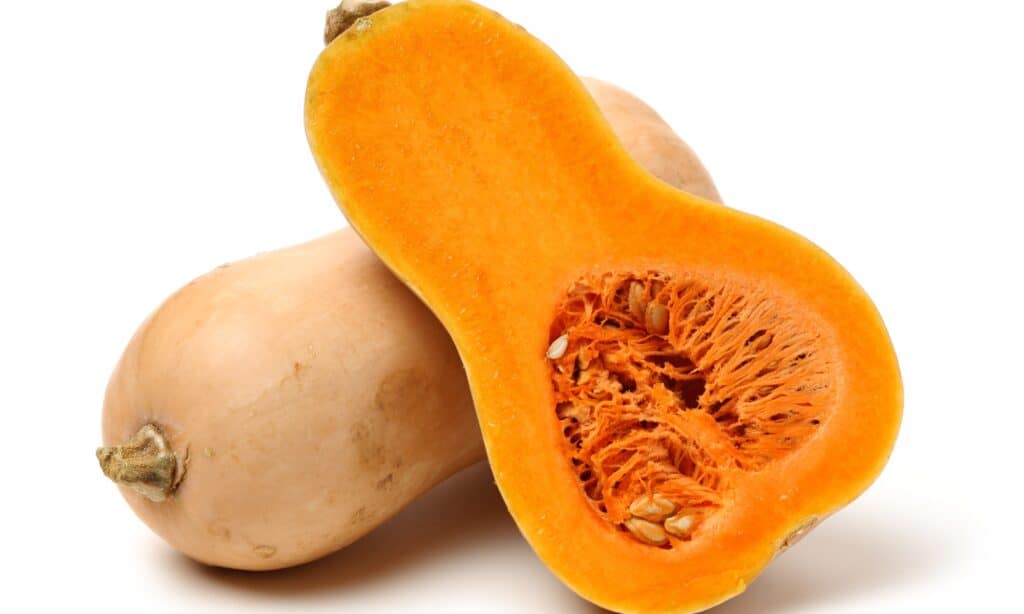
©iStock.com/chengyuzheng
2. Dull Skin
Determining the right time to harvest butternut squash involves assessing several factors, one of which is the skin’s appearance. When the squash is ready for harvesting, its skin takes on a distinct characteristic – it becomes dull. This means that the skin loses its glossy shine and becomes matte in texture. This dullness is a reliable indicator of maturity.
Examine the butternut squash’s outer surface closely. A mature squash should have a consistent, even dullness across its entire skin. You should not see any shiny or glossy patches remaining. Instead, the skin should exhibit a uniform tan or beige color, devoid of any green or yellowish tones.
3. Somewhat Hard Skin
Determining the optimal time to harvest butternut squash involves assessing various factors, and one crucial indicator is the firmness of its skin. When the squash is ready for harvesting, its skin should be notably hard to the touch, indicating maturity. This hardness is a reliable sign that the squash has developed a thick, protective rind.
To check for readiness, gently press your fingernail into the skin of the butternut squash. A mature squash will resist your nail, offering substantial resistance. This firmness signifies that the squash has reached the desired level of maturity and is prepared for harvest.
4. Large, Full Size
The size of your butternut squash is one of the main signs that it’s time to harvest it. The squash will be huge and full in size when it is fully mature. When a fruit reaches this size, it has had enough time to mature and generate the tastes and sugars that make it so delectable.
To assess its size, you should observe your butternut squash carefully. Mature squash will typically measure around eight to 12 inches in length and three to five inches in diameter, although these dimensions can vary depending on the specific variety. It should feel heavy for its size, indicating that it is packed with flesh and flavor.
5. Dry Stem
You can determine when your butternut squash is ready to be picked by looking at the stem. When the squash has completely developed and prepared for harvest, the stem will be dry and woody. This dryness of the stem indicates that the squash has completed its maximal growth potential and is now ready for harvest.
To check the stem, carefully examine the area where the squash is attached to the vine. A mature butternut squash will have a stem that is tough and brown, showing no signs of greenness or softness. You can gently press your fingernail against the stem to confirm its dryness; if it resists and feels hardened, it’s a strong indicator that the squash is ripe.
6. It Tastes Ready
A taste test is one of the best methods to determine whether your butternut squash is ready for harvest. When squash is fully grown, it develops a sweet and nutty flavor that is a fantastic addition to your cuisine.
Take a tiny slice of one of your butternut squash and carefully cut it from the flesh to taste it. Taste and feel the sampled piece as you take a bite, paying close attention to both the texture and flavor. A ripe butternut squash will have flesh that is creamy in consistency, sweet, and soft. A rich and nutty taste is preferred, with no traces of harshness or astringency.
The squash requires additional time on the vine to properly mature if you notice that it tastes undeveloped, bland, or somewhat bitter. In contrast, overly mature squash may become overly sweet or have a fibrous texture, which can affect its quality.
Taste-testing your butternut squash is a reliable method, but it’s advisable to sample only a small portion, leaving the rest on the vine if it needs more time to ripen.
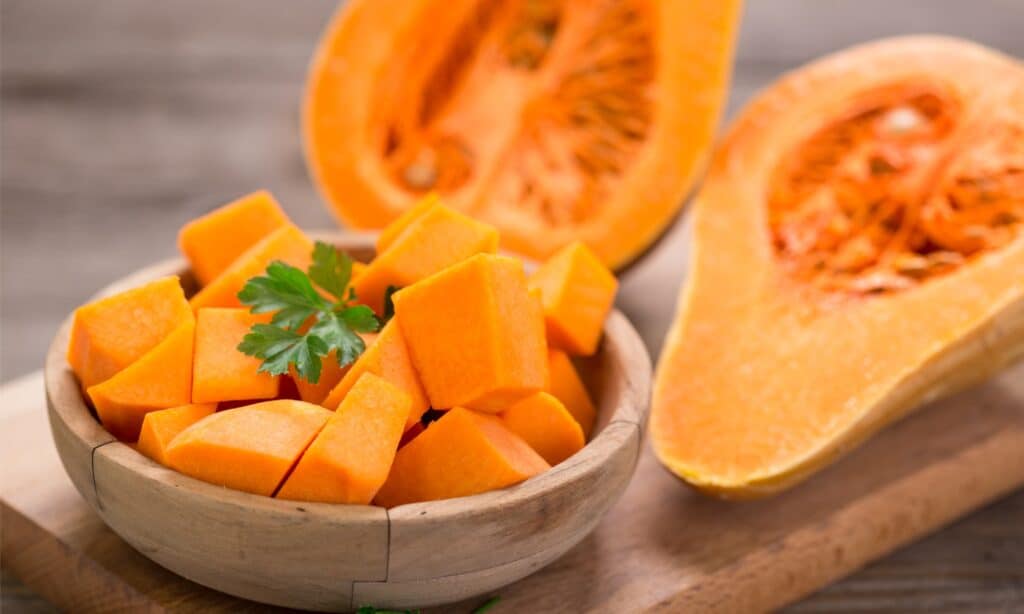
©iStock.com/pilipphoto
Tips for Storing Your Butternut Squash Harvest
1. Cure Your Squash
Our first tip for storing your squash is curing your butternut squash harvest before putting it in long-term preservation. Curing is a quick but crucial step that improves the texture and flavor of your squash while also extending its shelf life.
Harvest the ripe butternut squash and leave a few inches of stalk on it before curing it. After that, store the recently harvested squash for 10 days to two weeks in a warm, well-ventilated room. 80 to 85 degrees F are the best curing temperatures. The squash’s skin hardens during this period, and any small scratches or nicks will mend, lowering the likelihood that it will rot while being stored.
After curing, your butternut squash must be kept in a cool, dry location with temperatures between 50 and 55 degrees F, such as a pantry or cellar. A properly prepared and stored butternut squash will survive for several months, providing you with a steady supply of delectable, fresh squash for your dishes throughout the fall and winter.
Curing is a quick yet efficient way to maintain the quality of your harvest of butternut squash so you can continue to enjoy its delectable flavor and adaptability far after the harvest season.
2. Always Inspect Your Squash for Damage
An essential tip for storing your butternut squash harvest effectively is to always inspect each squash for any signs of damage before placing them in storage. Properly examining your squash ensures that you store only the highest quality specimens, which can significantly extend their shelf life.
When inspecting your squash, start by carefully examining the skin’s surface. Look for any cuts, bruises, or blemishes. Squashes with damaged skin are more susceptible to rot and spoilage, so it’s crucial to set them aside for immediate consumption rather than long-term storage.
Additionally, check the stem end of each squash. Ensure that the stem is dry and firmly attached. A damaged or wet stem can be an entry point for mold or bacteria, which can affect neighboring squashes.
By sorting your squash and selecting only those that are free from damage, you can help prevent the spread of spoilage to other squash in your storage. It’s also wise to store damaged squash separately and use them first, as they have a shorter shelf life than their undamaged counterparts.
Inspecting your butternut squash is a straightforward but important step that will help you preserve the quality and freshness of your crop and enjoy the delightful flavor of squash for a very long time.
3. Clean and Dry Your Squash
Cleaning and completely drying each butternut squash before putting it in storage is another helpful storage technique. Your squash’s shelf life may be substantially increased and mold or rot can be avoided by thoroughly washing and drying them.
Start by using a clean, wet cloth to carefully wipe out any dirt or debris from the surface of your squash. Use sparingly since too much water might encourage the formation of mold. Pay special attention to the stem and blossom end, ensuring they are clean and free from soil.
It’s important to allow the squash totally air dry after cleaning. For a few hours or perhaps overnight, leave them in a well-ventilated place to enable any remaining moisture to evaporate. This step is essential since moisture during storage might hasten the degradation process.
When your butternut squash is clean and dry, keep it somewhere cool, dark, and dry where the temperature is between 50 and 55 degrees F. If the squash is properly washed, dried, and stored, you can have a constant supply of fresh, delectable squash throughout the growing season.
Take the time to clean and dry your squash before storing it to maintain its quality and make sure they are in top condition to be utilized in a variety of recipes all through the fall and winter.
4. Choose the Best Location
Selecting the right location for storing your butternut squash harvest is a critical factor in ensuring their long-term freshness and quality. How well your squash keeps over the autumn and winter might vary greatly depending on the storage environment.
Butternut squash should ideally be kept in a cold, dark, and dry place. The range of 50 to 55 degrees F is great since it supports preserving the squash’s quality. Avoid keeping them in places with large temperature swings because doing so might cause them to deteriorate early or start to taste sour.
Additionally, it’s critical to keep your squash out of the sun, since extended exposure to light can result in deterioration and a loss of flavor. Ideal storage locations include basements, cellars, and pantries.
Another important issue to take into account is humidity. Low humidity levels in the storage room are necessary to stop mold and rot from growing on the squash’s skin. To sustain air circulation and avoid moisture buildup, adequate ventilation is crucial.
You can dramatically increase the shelf life of your butternut squash crop by carefully choosing a suitable storage facility that satisfies these requirements, ensuring that you have a consistent supply of tasty squash throughout the season.

©Bogdan Sonjachnyj/Shutterstock.com
5. Separate and Space Out Your Squash
This valuable tip for effectively storing your butternut squash harvest involves separating and spacing out each squash. Properly arranging your squash in storage helps prevent the spread of diseases and ensures good air circulation, which is essential for maintaining their freshness.
Firstly, it’s important to keep your squash separated. Do not stack or pile them on top of each other. Instead, place them in a single layer, allowing each squash to have its own space. This prevents any damage or pressure points that can lead to bruising or rot.
Also, spacing out the squash in storage is crucial. Adequate spacing allows air to flow freely around each squash, helping to maintain consistent humidity levels and preventing the buildup of moisture that can lead to mold or rot. Ensuring that there is space between the squash also makes it easier to inspect them regularly for any signs of spoilage.
It’s a good idea to leave some space between each butternut squash when placing them in storage to prevent touching or crowding. This easy but powerful technique will help you extend the quality and shelf life of your crop so you can continue to savor delectable butternut squash all season long.
6. Keep Out of Direct Sunlight
Our last important tip for storing your butternut squash harvest effectively is to ensure that your squash is kept out of direct sunlight. Exposure to direct sunlight can negatively impact the quality and longevity of your squash during storage.
Sunlight contains ultraviolet (UV) radiation, which can accelerate the deterioration of fruits and vegetables. When butternut squash is exposed to direct sunlight, it can lead to premature ripening and an increase in temperature around the squash, which can cause it to spoil more quickly. The UV rays can also degrade the nutritional content of the squash.
Store your squash in a cool, dark location to protect them from the sun. The best place is a cellar, pantry, or basement. If you don’t have access to a suitable storage location with limited light, think about covering your squash with a towel or keeping them in a cardboard box to prevent them from direct sunlight.
By properly storing the squash out of the sun, the flavor, texture, and nutritional value may all be preserved for quite a long time. By following these suggestions, you can make sure that your butternut squash stays in excellent condition and provides a delightful complement to your dishes throughout the season.
Summary of Clear Signals Your Butternut Squash Is Ready to Be Harvested (Plus Tips on Storing Them)
# Signal You Squash is Ready Tips on Storing Squash| 1 | Mature Color | Cure Your Squash |
| 2 | Dull Skin | Always Inspect Your Squash for Damage |
| 3 | Somewhat Hard Skin | Clean and Dry Your Squash |
| 4 | Large, Full Size | Choose the Best Location |
| 5 | Dry Stem | Seperate and Space Out Your Squash |
| 6 | It Tastes Ready | Separate and Space Out Your Squash |



